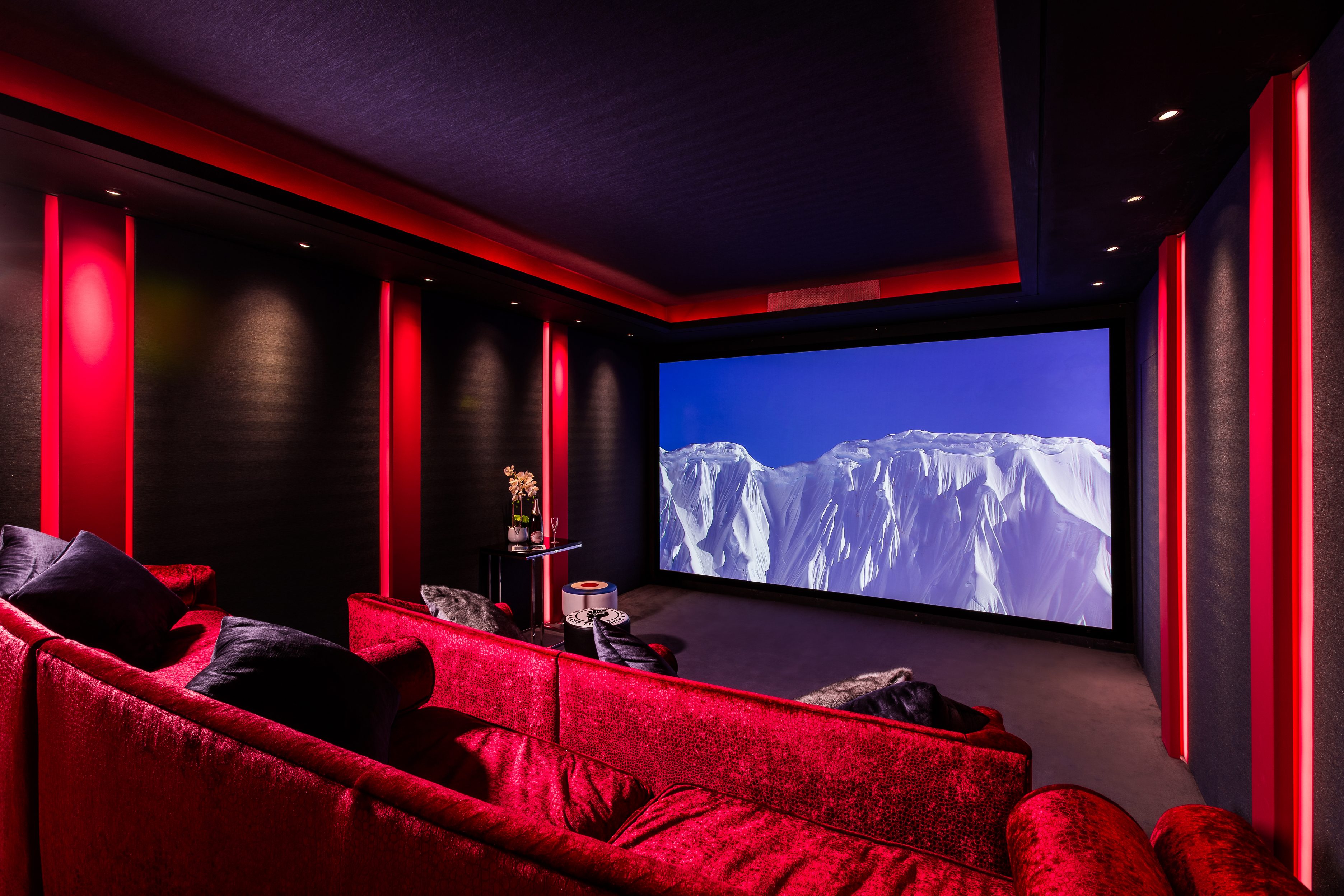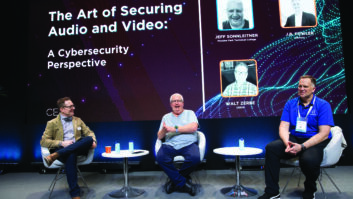
If your customers regard getting the ultimate experience as more important than budget, how do you wow them with a new home cinema system? Tim Frost sees what one London integrator has just achieved.
When you are established in the top end of the install market for the highest spenders you need to keep up with the latest developments. Clients demand integrated systems of extremely high quality that meet a family need – music anywhere and everywhere, dedicated music and video games rooms, plus local and remote control of lighting and temperature.
While this is all essential, the trophy product for many of the super-rich is the home cinema – and the emergence of the next generation of immersive cinema sound with Atmos, DTS:X and Auro-3D has simply upped the ante.
Enter Cornflake, a London-based installer of high-end integrated systems over the last 30 years. It has created a new home cinema space which, the company notes, is a not so much a home cinema as ‘a cinema at home’ – with a price tag of £250,000. Cornflake has taken some interesting decisions, notably going for Meyer Sound speaker systems used in commercial cinemas and film production rather than more traditional systems based on hi-fi speaker technology. At its London facility, Cornflake can show every aspect of integration for the most sophisticated systems.
“Our business has changed from supplying amplifiers and speakers to fully integrated systems. We do everything from lighting control and design, data, TV, communication, media distribution security and CCTV,” says Cornflake’s sales director, Helen Cowans.
“The systems are for multiple people using multiple systems at the same time,” adds Cowans. “We want to show them how they can use technology and give them ideas that they may not have thought about. “
Cornflake had a high-quality 5.1 Dolby cinema room, but the market is changing, says director Gary Lewis: “What we had was great, but we had to up our game. A lot of clients are expecting more and it is getting harder and harder to impress them. Over the last couple of years there’s been a lot of changes in audio formats, content availability – it has stabilised a bit now and over the past couple of months we have been working on this new room.”
Cornflake enlisted the help of Neil Davidson, MD of Genesis Technologies, to design the new room, which is 4m x 6.5m x 3m high and has seating for 10. The screen covers the entire end wall; the side walls and ceiling are pure interior design, with no speakers visible – they are all behind acoustically transparent wall coverings.
Significant difference
The most significant difference in this system compared with most home cinema installs is the use of Meyer Sound speaker systems. The system is set up as an Atmos 9.2.4 (three screen and six side speakers; two sub-bass; four ceiling speakers) fed from a Kaleidescape server and passed through a Trinnov Altitude32 processor. This can feed the room with Dolby Atmos or Auro-3D soundtracks. “Our research made us go for the Trinnov because that can do both Atmos and Auro-3D,” notes Cornflake client sales manager Peter Miller.

Dolby’s offering is the one that most clients naturally talk about as the next step forward, he says. “We are format agnostic, But we listen closely to our clients and a lot of the feedback from them is that they want Atmos.”
Behind the screen are the three Meyer Sound Acheron Designer speakers and an X-800C twin 18in subwoofer, all built into a solid baffle to radiate into 180º space. Behind the side wall panels is a total of six Meyer Sound HMS-5 compact speakers, with four more in the ceiling. There is a further X-800C behind the rear wall under the JVC DLA-Z1 laser projector, which is getting its one of its earliest public outings as a production unit and looking very crisp.
The speaker installation places the HMS-5 behind the wall panels; as the speakers are angled, the room loses nearly 0.5m on each side, which is relevant for those looking to build a similar room, or dig one underground.
All the speaker systems are active, with built-in amplifiers and DSP, which has two impacts on the installation. The first is on quality, with the integrated DSP tailoring phase, power and other characteristics exactly to the requirements of the drivers.
The second is an entirely practical one. With a 5.1 install, a rack room could still comfortably house all of the home’s lighting, media sources control electronics as well as the cinema processor and five or six amp channels, but a 9.2.4 system would need up to 15 amplifier channels. “We are looking to go the active route for the control, the phasing and the timing,” explains Miller.
“As the rack is used for the whole house, things need to be shrunk down. The active Meyers need just a PSU and a controller, so that is using just 3U of rack space in total.”
The original plan was to have the two twin-18in subs behind the screen, says Davidson, “but I moved one to the back to address the problem of standing waves in small rooms – something that doesn’t really happen in larger spaces.”
The 3.8m 16:9 screen covers the end wall and has a small but important addition: active masking, top and bottom, that glides almost silently into position to give the projection crisp edges, whether it’s 16:9, 2.35:1 or wider still – just like at the movies.
Buying an experience
It is these touches that make the difference, says Lewis. “Customers are not buying a laser projector and a screen and speaker; they are buying a cinema experience and that is where the value is. You cannot take shortcuts; the design and the masks are just as important as anything else in the installation.”
The move to installation-type speakers with their long-throw drivers and compression horns – normally anathema to audio purists – shows that Cornflake is looking at the system from the cinema perspective rather than as an extension of surround hi-fi.
“When we looked at traditional CI brands we couldn’t find a brand in the CI market that would give us the punch,” says Davidson. “I met up with Meyer Sound who wanted to break into the European CI market, although I didn’t know who they were at the time.”
The manufacturer’s original entry into the market came about rather by chance. “We weren’t looking at doing this,” explains Andrew Davies of Meyer Sound technical sales support, “but we’ve been asked by film people like Francis Ford Coppola, who wanted a system at home to do the same as we had done for him in the studio.”
Replicating the commercial cinema sound requires delivering a lot of energy into the room, which is where installation speaker systems come into their own. They can deliver the power and level comfortably without overdriving, distortion or compression – especially important when movie soundtracks are more ambitious than ever and delivered at 96kHz/24-bit.
High-quality professional installation speaker systems will outperform hi-fi based systems when working towards replicating the cinema experience in a home system, says Davies. “Apart from the number of channels, what you need is the dynamic range to keep up with the current formats, so the headroom is really important.”
And by easily sustaining levels of 100dB during the demo with zero sign of strain, this concept has shown that it certainly delivers – albeit at a price.
www.cinema-ats.com
www.cornflake.co.uk
www.dt-screens.com
www.genesis-tech.eu
http://uk.jvc.com
www.kaleidescape.com
www.meyersound.com
www.trinnov.com







